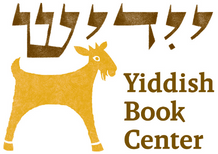Yiddish Periodicals across America
Published on April 18, 2024.
Don’t let the Yiddish Book Center’s name mislead you—the printed Yiddish word doesn’t live only in books. In fact, a significant portion of Yiddish publishing was done periodically, in newspapers, magazines, and literary and trade journals. Even big names like Isaac Bashevis Singer published in serial format—for most of his career, he first published his novels and stories in the Forverts (Forward).
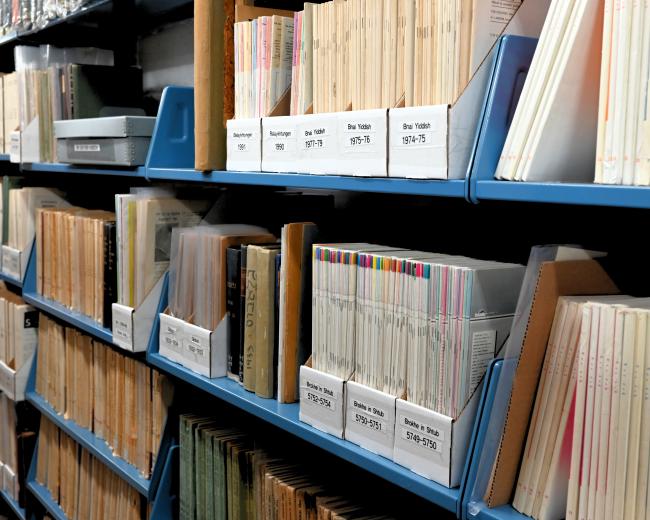
The bibliography team has recently been working to sort and document our collection of Yiddish-language periodicals. In the process, as we get them out of the boxes that have been their home for the last few years and onto shelves—making them visible and accessible—we’ve discovered all sorts of interesting journals, such as Yugntruf (Call to Youth), a journal founded in 1964 as an outlet for a new, younger generation of Yiddishists; Davke, a high-minded Yiddish-language philosophy journal from Buenos Aires; and the Gezunt almanakh (Health Almanac), full of all sorts of intriguing but outdated medical advice.
While these publications come from all over the world, this Jewish American Heritage Month, we wanted to highlight three Yiddish journals from three centers of Yiddish American life: New York, Chicago, and Los Angeles.
Kheshbn Journal
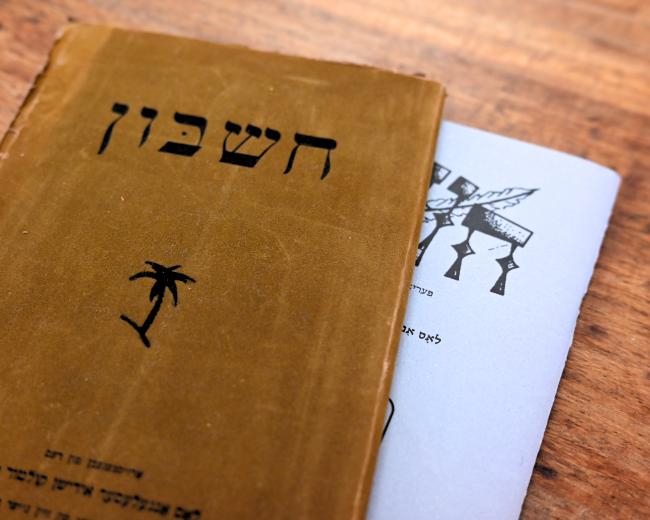
With its glittering, palm-tree-adorned cover page, Kheshbn (Reckoning) could only be a product of the Golden State of California. The Los Angeles Yiddish Culture Club published Kheshbn, a Yiddish literary journal, from 1946 to 2007. The founding editors, H. Rosenblatt, J. Friedland, and Eliahu Tenenholtz, introduced the journal in their first issue as “a kheshbn—nisht keyn sakhakl” (a reckoning—not a summary) of Jewish literature. To this end, they published a diverse and inclusive collection of Yiddish literature and critique. Featured contributors included California-based writers Malka Heifetz Tussman, Broche Coodley, and the literary couple Peretz Hirshbein and Esther Shumiatcher.
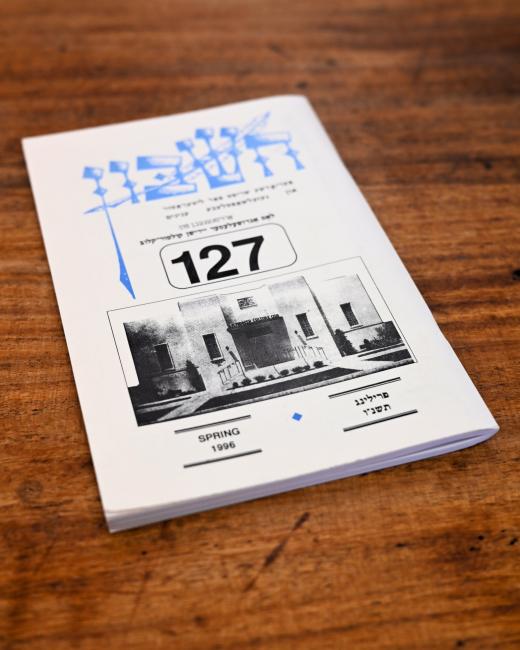
Kheshbn also chronicled decades of news, events, and membership from the LA Yiddish Culture Club, which had been active since 1926. The post–World War II influx of Yiddish-speaking immigrants to Los Angeles meant their organization grew exponentially. As these new Californians memorialized their Eastern European roots in Kheshbn, they also planted new ones that kept the journal running for over sixty years.
Zhelekhover buletin
Landsmanshaftn—Jewish mutual-aid societies whose membership typically consisted of emigrants from a given shtetl or town (or their descendants)—were frequently involved in the Yiddish publishing scene. Though most often associated with the Yizkor (memorial) books many such societies published after the Holocaust, many landsmanshaftn also published regular updates via newsletters or bulletins: news about society business, notices of khasenes (weddings) and levayes (funerals), and other updates of interest to Jews with the same roots. Published in Chicago, the new American home of many Jews from the town of Żelechów, Poland, one such newsletter was the Zhelekhover buletin.
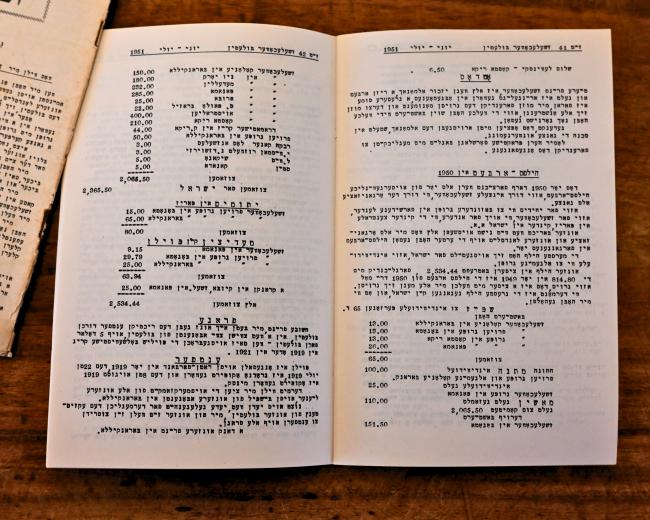
One feature stood out to us as we were sorting through the Zhelekhover buletin: every October, around the anniversary of the liquidation of the Żelechów ghetto by the Nazis, they would publish an issue featuring a thick black border around the edges of every page. This practice of writing on black-bordered pages began in the 17th century with so-called “mourning stationery,” used to indicate that the letter writer had lost a loved one. The surviving Jews of Żelechów adopted this practice once annually for their monthly missive, bringing the established visual language of personal loss into the realm of communal grief and memory.
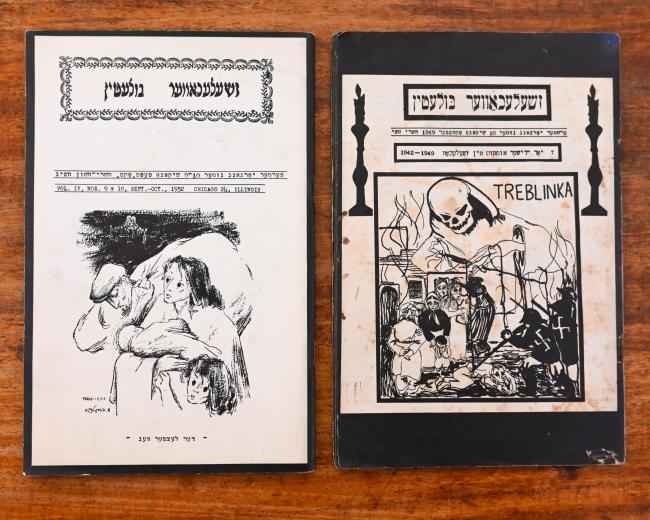
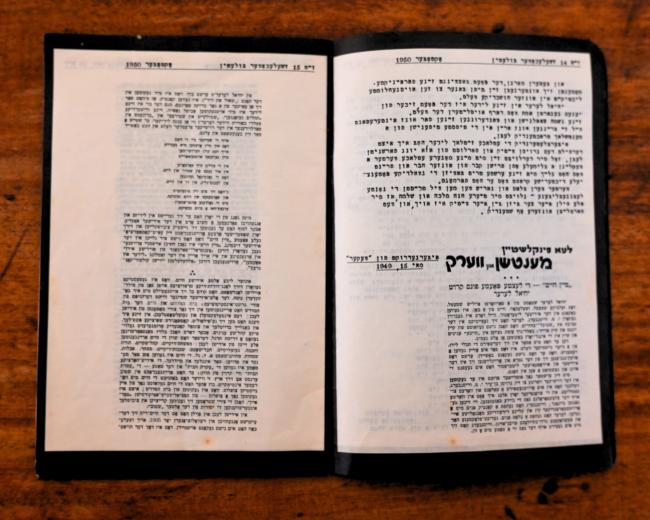
Zamlungen
The literary quarterly Zamlungen—affiliated with the Jewish Writers Organization of IKUF (the international leftist Yiddish cultural organization established in 1937)—released its first issue in early 1954 in New York. IKUF already published the monthly Yidishe kultur, but Zamlungen’s editors hoped their new journal, published quarterly, would allow progressive Yiddish writers an outlet for longer pieces. In their introductory essay, they stressed that artists and writers must be political, must contribute to “the struggle for peace”—but that Zamlungen would above all be a place that elevated the Yiddish artistic word.
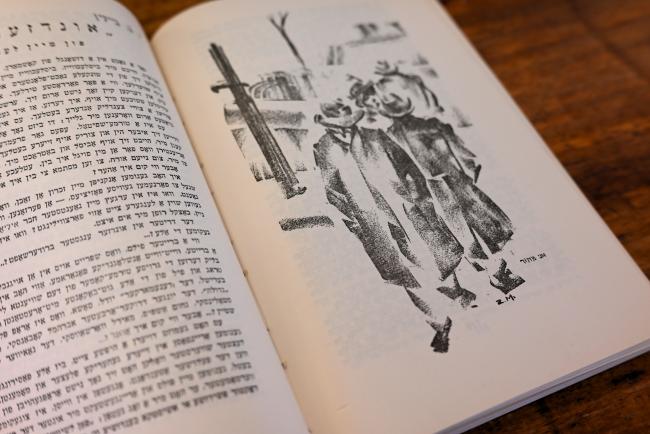
Zamlungen published fiction, poetry, drama, essays, and memoirs by a wide range of authors, including some read and translated today, like Dora Teitelboim, Chaver Paver (of Labzik fame), and the recently translated Frume Halpern. They also included reprinted work by writers like Y. L. Peretz and Morris Rosenfeld and translations from multiple languages. Also notable: Zamlungen’s contributors seem to have included a surprising number of women.
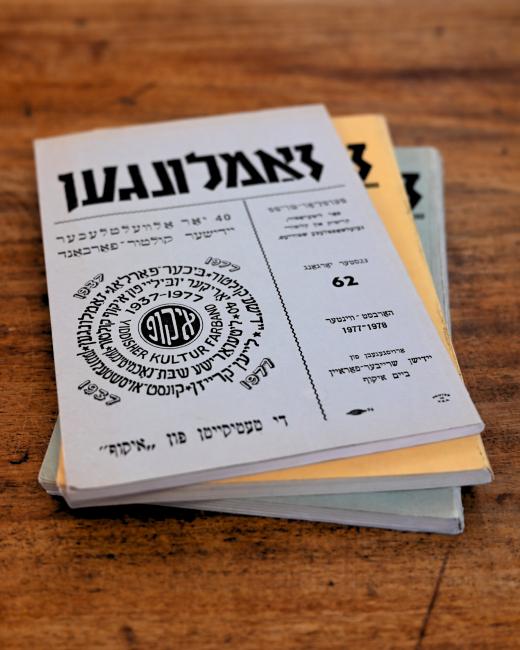
Zamlungen’s run ends—as far as we’ve been able to ascertain—in 1978 with its 62nd issue, a celebration of IKUF’s 40th anniversary whose table of contents shows new voices alongside writers and artists who had been publishing in Zamlungen since the beginning.
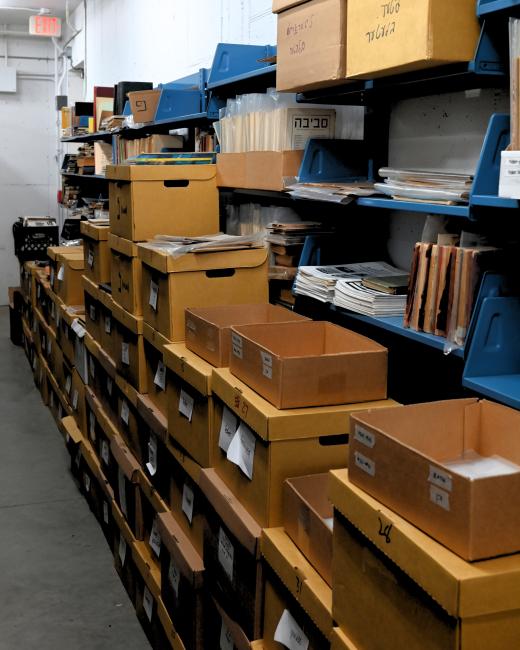
Our work with the Center’s collection of Yiddish periodicals is well underway but far from finished. If you have any questions or inquiries about the collection please be in touch with the bibliography department at [email protected]. We may not have the answer yet, but our shelves are filling up week after week!
—2023–24 Bibliography & Collections Fellows; Claire Breger-Belsky, Maya González, and Caleb Sher
